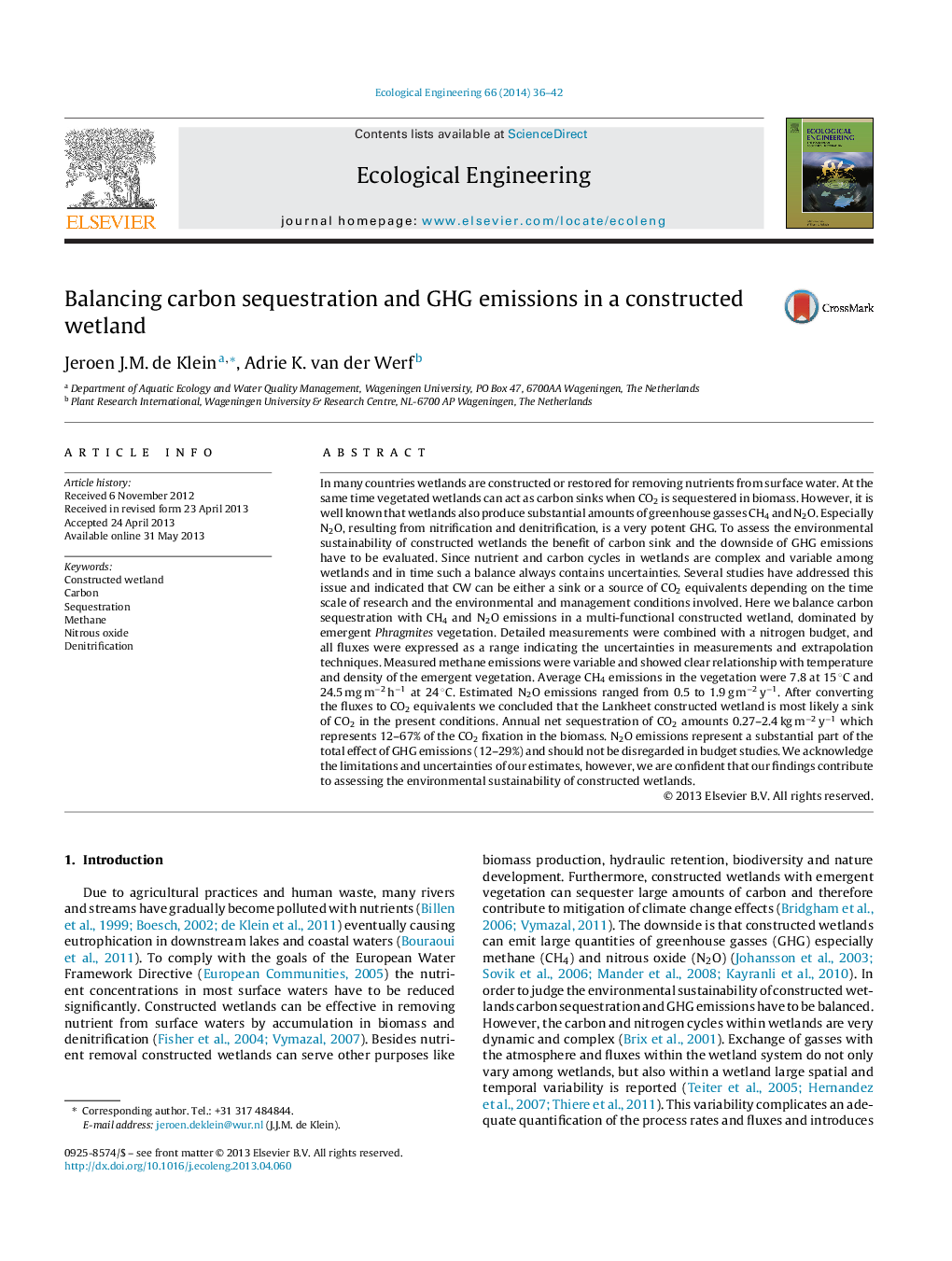| کد مقاله | کد نشریه | سال انتشار | مقاله انگلیسی | نسخه تمام متن |
|---|---|---|---|---|
| 4389536 | 1618033 | 2014 | 7 صفحه PDF | دانلود رایگان |
• We studied carbon and nitrogen fluxes in a constructed wetland (CW).
• C sequestration and CH4 emissions were measured, and N2O was estimated from a nitrogen budget.
• Budget and measurements vary considerably.
• The studied CW can be regarded as a net sink of CO2 (0.27–2.4 kg m−2 y−1).
• N2O emissions are probably substantial and should not be disregarded.
In many countries wetlands are constructed or restored for removing nutrients from surface water. At the same time vegetated wetlands can act as carbon sinks when CO2 is sequestered in biomass. However, it is well known that wetlands also produce substantial amounts of greenhouse gasses CH4 and N2O. Especially N2O, resulting from nitrification and denitrification, is a very potent GHG. To assess the environmental sustainability of constructed wetlands the benefit of carbon sink and the downside of GHG emissions have to be evaluated. Since nutrient and carbon cycles in wetlands are complex and variable among wetlands and in time such a balance always contains uncertainties. Several studies have addressed this issue and indicated that CW can be either a sink or a source of CO2 equivalents depending on the time scale of research and the environmental and management conditions involved. Here we balance carbon sequestration with CH4 and N2O emissions in a multi-functional constructed wetland, dominated by emergent Phragmites vegetation. Detailed measurements were combined with a nitrogen budget, and all fluxes were expressed as a range indicating the uncertainties in measurements and extrapolation techniques. Measured methane emissions were variable and showed clear relationship with temperature and density of the emergent vegetation. Average CH4 emissions in the vegetation were 7.8 at 15 °C and 24.5 mg m−2 h−1 at 24 °C. Estimated N2O emissions ranged from 0.5 to 1.9 g m−2 y−1. After converting the fluxes to CO2 equivalents we concluded that the Lankheet constructed wetland is most likely a sink of CO2 in the present conditions. Annual net sequestration of CO2 amounts 0.27–2.4 kg m−2 y−1 which represents 12–67% of the CO2 fixation in the biomass. N2O emissions represent a substantial part of the total effect of GHG emissions (12–29%) and should not be disregarded in budget studies. We acknowledge the limitations and uncertainties of our estimates, however, we are confident that our findings contribute to assessing the environmental sustainability of constructed wetlands.
Journal: Ecological Engineering - Volume 66, May 2014, Pages 36–42
